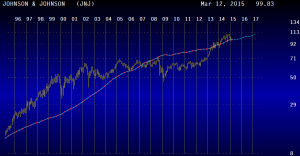This week, I continue from where I left off in The Life-Changing Magic of Tidying Up… Your Investment Portfolio. What I like about the KonMari method is its simplicity. Keep the things that spark joy and dispose of the rest. There is also a specific order to the decluttering madness: clothes, books, papers, komono (miscellaneous), and finally mementos. Basically, you start with the low hanging fruit. I quickly reduced my collection of 100 t-shirts that no grown man needs. The idea is to work through each category, carefully honing your skills so that you're ultimately prepared to sort through your toughest opponent, keepsakes and sentimental belongings. Why stop there? I suggest that you keep going.
Do your investments spark joy?
Admittedly, evaluating stocks or mutual funds are more complex than t-shirts. Yet Kondo's standard of measurement still has merit. Reducing your investments to only those that spark joy is an opportunity for optimization. The result can be fewer names that are easier to monitor, making your finances more manageable and less overwhelming. Owning only investments that you love could be the difference enabling you to ignore short-term noise, worry less, and ultimately reach your goals.
I can hear you groaning right now. Investments that spark joy? Come on. Seriously, I have witnessed it many times. My wife's almost 90-year uncle is living proof. He only owns four stocks. While his wife appreciates the safer diversification of mutual funds, Uncle Joe watches his four stocks like a hawk. He reads annual reports, listens to conference calls, and visits stores to gauge customer foot traffic. When he talks to me about his investments, his eyes light up. There is no doubt that he not only finds joy in investing, but I think it keeps him young too.
Investments, like clothes or books, are highly personal. Some make their fortunes in real estate. Others love to invest in high growth companies while others seek out deep value opportunities. As much as I appreciate the merits of low-cost of index funds, I confess that for me, an individual company is more likely to spark joy than a fund. A fund with 500 or more holdings is very abstract, and it's tough to wrap one's head around. Read on and you'll see that I remain a fan of indexed investing, however. First, let me outline a portfolio that sparks joy in me.
Invest in the Best
I want to be a long-term owner of great businesses. Sticking to high quality companies, defined by excellent management, strong balance sheets, and outstanding growth prospects, limits how far you can go wrong. The foundation of my firm's investment thesis is that stock prices are correlated to earnings growth so owning a diversified portfolio of great companies can reward shareholders handsomely over time.
For an illustration, take a look at Johnson & Johnson, a company with an exceptional track record of growth that few, if any, companies can claim: 31 consecutive years of adjusted earnings increases and 52 consecutive years of dividend increases. Imagine owning a diversified portfolio of companies with similar growth characteristics. For shareholders, earnings (the plotted red dots connected by the blue line) can spell joy. At least, it does for me.

source: Thomson Reuters
Asset Protection
In today's dynamic world, it is challenging to maintain a portfolio that remains static. However, investing in great companies can be compared to planting a tree where you let it grow and interfere as little as possible. How do you reconcile these two conflicting forces? This is where indexed investing fits into my joyful portfolio. Because there are times to be defensive when it rains and other times to make hay when the sun shines, I earmark a portion of portfolios for Exchange Traded Funds (e.g. S&P 500) that are designed to be held during good times and sold to protect against major bear markets. This portion of the portfolio provides broad market diversification but also flexibility to adjust the overall allocation to stocks, when necessary.
Conclusion
There you have it. In its simplest form, that is my portfolio that sparks joy. If it sounds good to you, please drop me a line. If your portfolio that sparks joy looks completely different, please still drop me a line. I'd love to hear about it. I am open to new ideas. After all, as Kondo writes, “People cannot change their habits without first changing their way of thinking.”
Good luck to you and don't lose sight of the goal. “Your real life begins after putting your house in order.”
Photo by Jacqueline Munguía on Unsplash
What sparks joy in your portfolio? Is it strictly profit/loss? Is it social responsibility? Do you feel the need for a full Spring cleaning?
By






